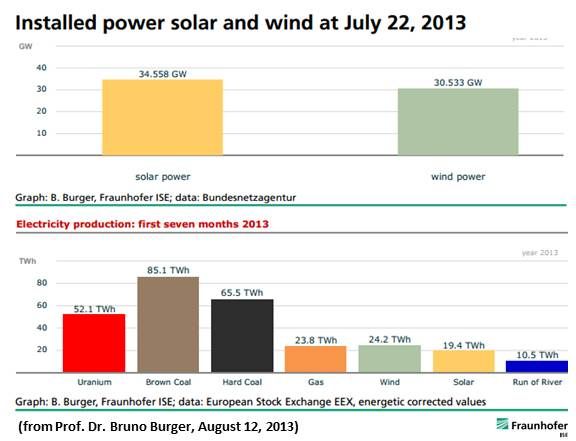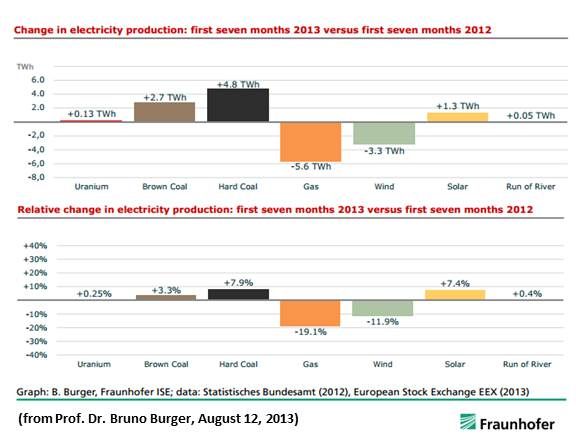Germany set a new record in July by providing 5.1 terawatt-hours of electricity from solar. That beat its record production of 5.0 terawatt-hours of electricity from wind in January of this year.
These records are impressive even for a country that owns nearly a third of the world’s installed solar capacity. They are even more impressive considering that Germany's solar resource is not as good as New England's, and that it is still pioneering offshore wind in the North Sea.
But there are several other important numbers to notice in Germany's 2013 electricity production.
First, Germany’s installed solar capacity as of July 22, 2013, according to the Fraunhofer Institute's Bruno Burger, was 34,558 megawatts. By contrast, the GTM Research Q1 2013 U.S. Solar Market Insight report put the U.S. installed PV capacity at 7,962 megawatts (with another 6 megawatts of concentrating solar power installed capacity).

Germany also had an installed capacity of 30,532 megawatts of onshore and offshore wind in July. The U.S. had over 65,000 megawatts of wind at the end of 2012, though it has yet to build offshore.
Germany’s relatively balanced combination of wind and solar makes a complementary generation pattern, according to Dr. Burger. July’s 5.1 terawatt-hour maximum PV output matched Germany’s wind minimum of 1.7 terawatt-hours the same month. The January maximum wind output of 5.0 terawatt-hours matched the country’s minimum solar output of 0.35 terawatt-hours the same month.

From January through July of this year, Germany got 52.1 terawatt-hours of electricity from nuclear power, 150.6 terawatt-hours from brown and hard coal, 23.8 terawatt-hours from natural gas, 24.2 terawatt-hours from wind, 19.4 terawatt-hours from solar and 10.5 terawatt-hours from hydro.
That means that 8.6 percent of Germany’s electricity was from wind and 6.9 percent from solar. It offers real promise that the country is well on its way to achieving Chancellor Merkel’s goal of 80 percent renewables by 2050. That’s the good news.
The not-so-good news is that Germany’s use of nuclear power increased 0.25 percent and its use of coal increased 11.2 percent in the same seven-month period. That suggests Chancellor Merkel’s goal of shuttering the nation’s nuclear industry by 2022 presents some challenges.




